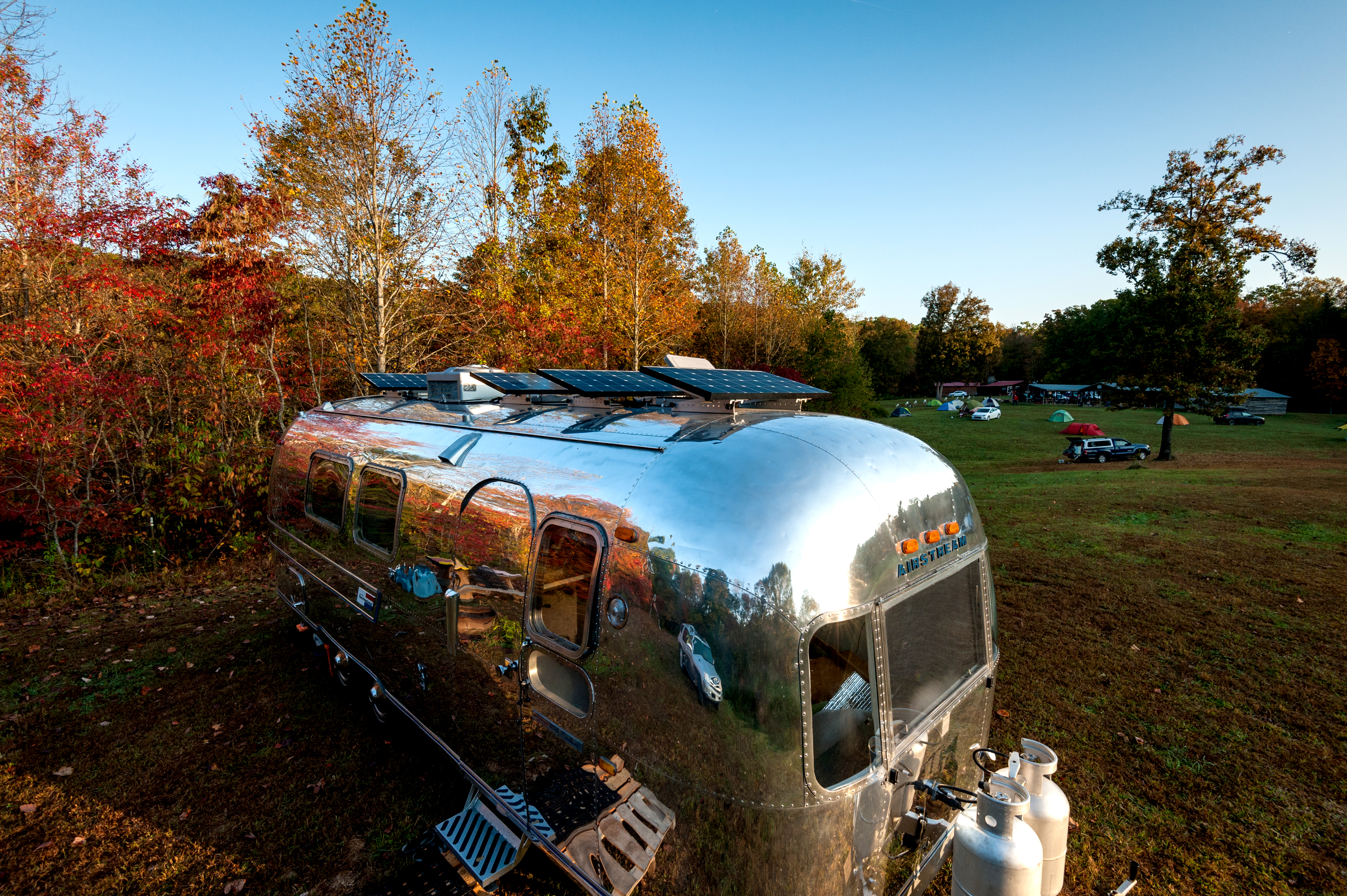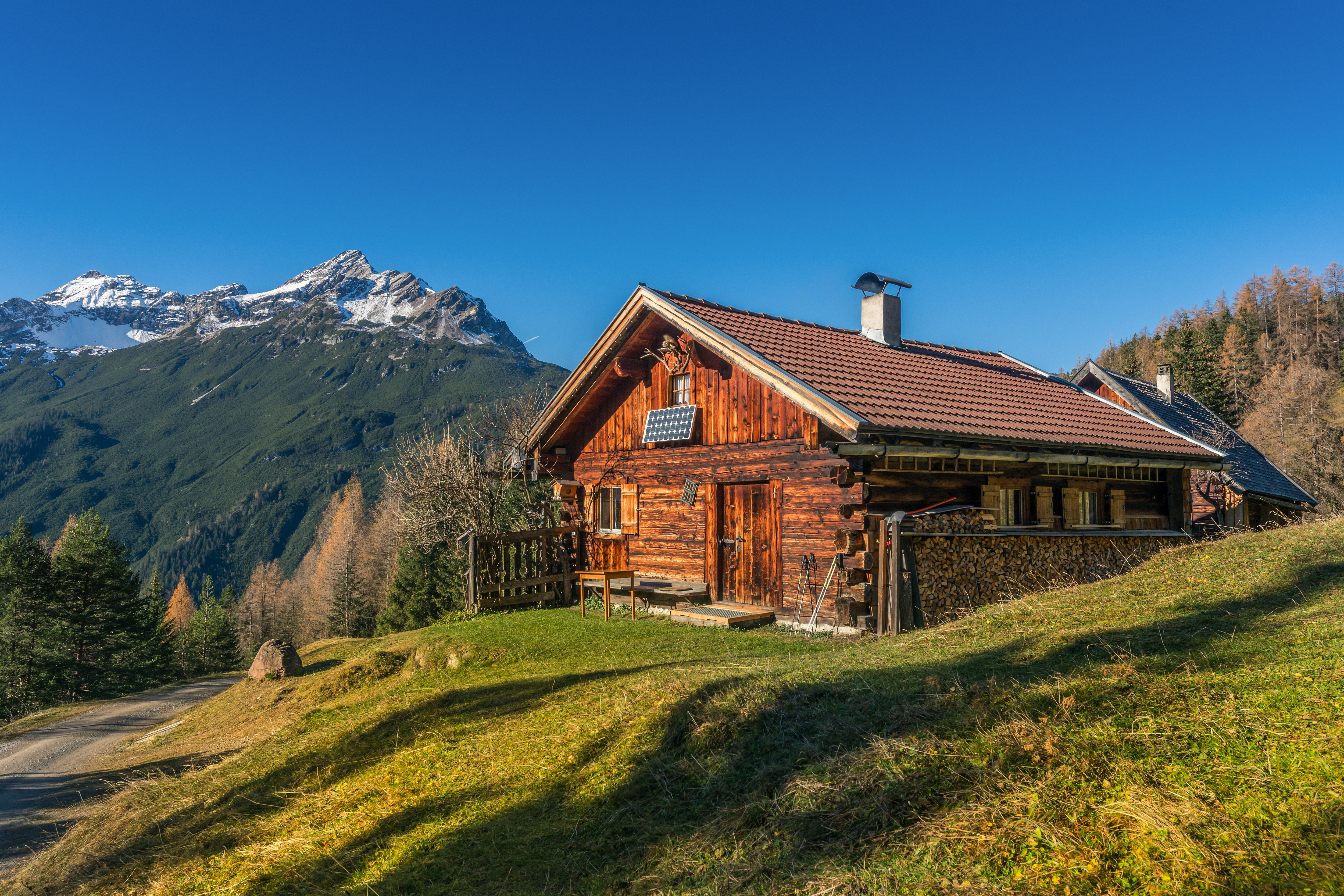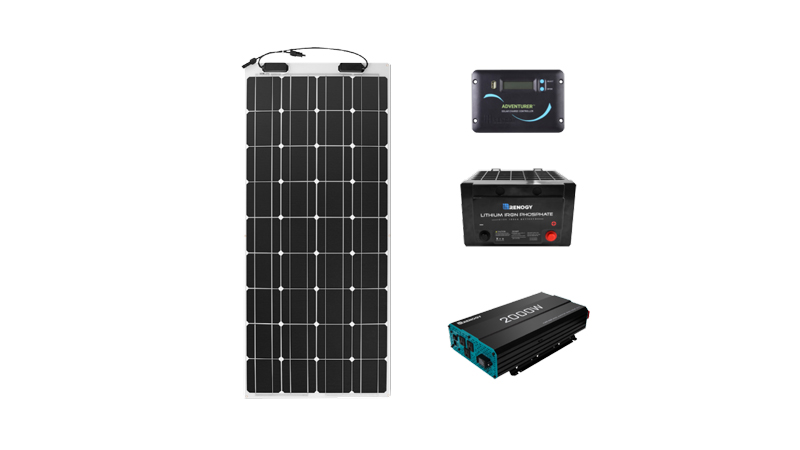Years ago when people imagined going solar, they may have envisioned a hermit living in the desert with a solar array on the roof of their off-grid home. Although that image has shifted over the years and more and more average Americans are adding solar to their homes, RV’s, vans, or cabins, going off-grid is often the first thing people think of when it comes to solar.
Off-grid solar can be a great solution for a lot of people and with easy-to-use
solar kits, it’s never been easier. However, it’s not for everyone. Here’s a breakdown of small off-grid solar projects, from pros and cons of being off-grid to what you need to get started.

What is off-grid solar?
Off-grid solar systems, or stand-alone power systems, produce enough energy through the usage of solar panels and battery storage without having to tap into the electric grid. Historically, off-grid systems have been out of reach most people because of the high costs of inverters and batteries. However, prices continue to drop and technologies continue to improve, making it more financially feasible for more people.
Off-grid vs. on-grid
1. Off-grid solar systems (stand-alone power systems)
Off-grid systems utilize batteries to store energy produced from solar panels. Systems must be sized and designed to fit a variety of needs throughout the year, especially in the winter when there are fewer sunlight hours. If you live in a remote area without reliable and affordable access to the grid, off-grid solar can be a great way to meet your energy needs.
2. On-grid systems (grid-tie solar systems)
On-grid systems are the most common and widely used systems. You do not need battery storage and can simply use energy from your panels when they are producing. Then, when your panels aren’t producing power, such as at night or when it’s too overcast, you can tap into the grid. Excess solar that’s produced is often credited to your utility’s account with a mechanism known as net metering. Then you can use that power at night without paying extra.
One important thing to consider is on-grid systems do not function during a blackout. This is because it would be a safety concern for a system to push power into the grid when utility workers may be out making repairs to the network.
3. On-grid systems with battery storage
With the decreasing costs of batteries, more and more people are choosing to add battery storage to their on-grid projects to be able to take advantage of the benefits of both on- and off-grid systems, such as having energy access during blackouts and having to pay for less energy from the grid.

Is going off-grid right for me?
If any of these apply to you, going off grid may be a great solution:
- I live in a tiny home, cabin, RV, boat, or isolated area.
- I want to be energy independent and stop paying money to the utility.
- I live in an area without reliable, steady access to power from the grid.
- I want to live sustainably and lower my carbon-footprint.
What are the benefits of solar?
Solar is a reliable, cost-effective, portable, sustainable, quiet and virtually maintenance-free energy solution. Contrary to noisy, dirty gas-powered generators, solar systems are virtually silent and because you’re harnessing the power of the sun, you don’t have to rely on using gas or the electric grid to power your home.
If you live in an RV or van, solar panels can recharge your house batteries, allowing you to run AC appliances while on the road without needing to hook up to external power sources. Maintaining a steady stream of power can also extend the life of the batteries in your RV since you’re not constantly drawing down power from them. Plus, solar panels can work all day long, whether you’re home or not, meaning you could be out for a hike and charging up your batteries in time for movie night in your off-grid RV.
Pros and cons of an off-grid home:
Pros:
No more monthly utility bills: Because you’re not tapped into the grid, that means you can say goodbye to your monthly energy bills.
Can access power during a blackout: Those connected to the grid will not be able to produce solar during a blackout for safety concerns. But if you’re off grid, you’re good to go.
Reduce your carbon footprint: Relying on renewable energy is a greener, more sustainable way to live and travel.
Cons:
Generally more expensive than being on-grid: Again battery prices continue to increase in efficiency and drop in cost, but going off-grid is typically more expensive. This is also because you’ll need to install a larger system since you won’t be able to rely on any external grid power to keep the lights on.
You still may need a gas powered generator to cover extra energy needs: Many people often decide to purchase a back-up generator for their homes, in case of emergencies or system failure.

Components of a solar system
First let’s talk about the basics of how solar energy is generated, regardless of if you’re on or off-grid.
Photovoltaic solar panels are made up of many solar cells made of silicon. When sunlight hits the panels, they create an electric current. That current then feeds into a charge controller, which controls how much current goes to a battery. Charge controllers prevent batteries from being overcharged. Batteries store and produce DC power. In order to use AC appliances, such as microwaves, laptops, and phone chargers, an inverter is used to change the power from DC into AC power.
Solar Panels (Collection)
There are a few different solar panel options available to choose from. Panels can be flexible and rigid, as well as monocrystalline or polycrystalline. Polycrystalline panels are less efficient than monocrystalline panels, but are also cheaper. Monocrystalline panels are more space-efficient.
Additionally, flexible solar panels weigh less than the rigid solar panels and can be installed directly on the roof of your RV or van. Rigid panels, which are more typically durable, can also be mounted to tilt, which makes their solar energy collection more efficient.
Monitoring (Charge Controller)
Charge controllers sit between the energy source and storage and prevents overcharging of batteries by limiting the amount and rate of charge to your batteries. They also prevent battery drainage by shutting down the system if stored power falls below 50 percent capacity.
Batteries (Storage)
You’ll also need a way to store all the power you’re generating with your solar panels. This is where batteries come into play.
There’s a range of deep cycle battery options, such as lead acid, absorbed glass matt, and lithium ion batteries. Lead acid batteries are the most inexpensive option and are available at most big-box and auto stores. Absorbed glass matt batteries store 10 to 15 percent more energy than lead acid batteries and charge up to four times faster. Lithium ion batteries are the most expensive options, but also last four times longer than lead-acid batteries and weigh much less. They also don’t require much maintenance to keep them running strong.
Inverters (Usage)
Inverters turn DC power produced from your solar panels and stored in your battery into AC power. An inverter is necessary to power the common appliances found in your home or RV, from TV’s to microwaves.
What do you need for an off-grid solar system?
Renogy has a variety of
solar kits designed specifically for autonomous use away from the grid. These off-grid kits come with everything to power up your cabin, home, and are great additions to sheds, tiny homes, or any other type of remote system. You’ll need to purchase a separate inverter and battery bank to be able to stay powered up.
How much power do I need?
The
Renogy solar panel calculator is a great tool that makes it a quick and easy process to help determine your specific needs. The solar sizing calculator allows you to input information about your lifestyle and energy needs to help you decide on your solar panel requirements. You’ll just need to know what total watts your electronics will consume, how long you plan on running the devices, your charge controller efficiency, and average sun hours per day. The solar panel calculator will then be able to tell you the minimum and recommended system size, as well as the recommended battery output.
How much does going off-grid cost?
Depending on the size of your system, technology can vary between around $3,000 to upwards of $7,000. For example, Renogy’s off-grid kits costs range $2,693 for a smaller system to $6,400 for a 4500 watt 48 volt system. This does not include the costs of any contractors or licensed professionals you may hire to install the system.
Do I need special permits to go off-grid on my home or cabin?
Every jurisdiction is different. Check with your state energy office, local officials, or a local renewable energy organization to see what requirements exist to make sure you adhere to rules, regulations and building codes.
What sort of maintenance do I need to do on my off-grid solar system?
Solar installations are known for being very low maintenance. In the winter, we’d recommend investing in a snow brush for removing snow from the panels (although panels generate enough heat to typically melt off most snow.) In the fall, we’d recommend brushing off any leaves that may collect on the surface of the panels. We’d also encourage you to wash off the panels at least once a year to remove any dirt or other residue that may have collected.
Depending on what batteries you end up using for your system, you’ll want to make sure you’re up on your maintenance of your battery bank. If you’re using flooded lead acid batteries, you need to check water levels with a hydrometer and add water to keep them topped off each month. Be sure to keep your terminals clean and check them regularly for corrosion.
We also recommend checking to see what your solar system is outputting at least twice a year to make sure you don’t have any issues in your system. Charge your batteries fully once a month, in order to equalize the batteries in your bank. You can use an amp hour meter to check to see if the batteries are fully charged.
We hope this answers some of the big questions you had about off-grid solar. It really doesn’t have to be as scary as you might think. Whether you’re designing an off-grid RV or planning on living a self-sufficient lifestyle in your home, using solar energy can be a great way to save money, be green, and provide steady, reliable power for years.






